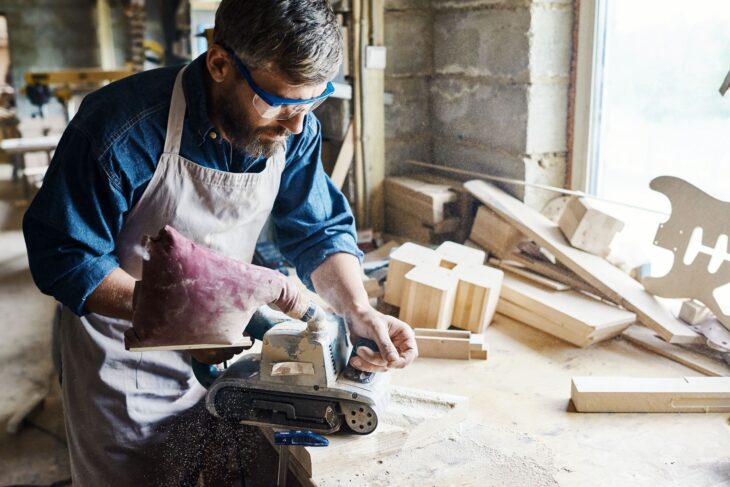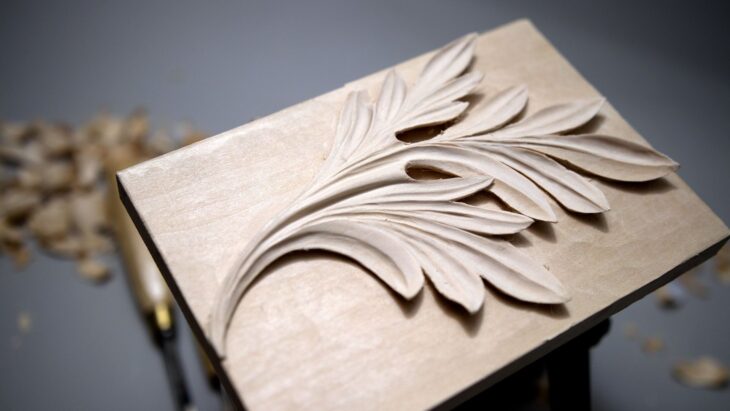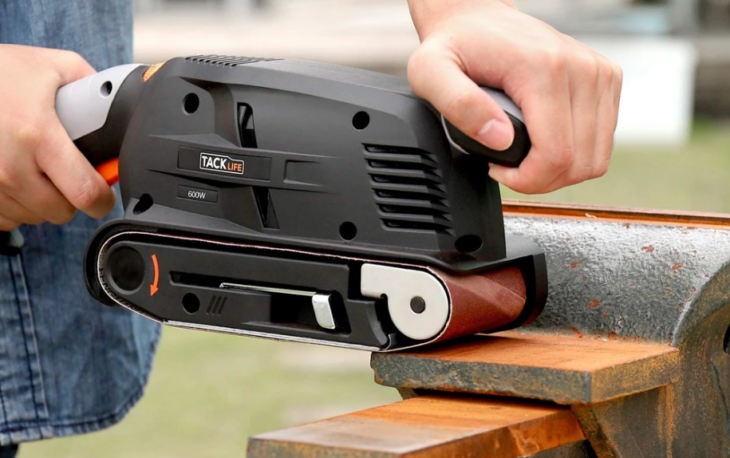Do you remember the time when you first purchased your brand spanking new belt sander and lugged the beauty home? Few things in life give as much satisfaction as purchasing a power tool of your own… that might be just a personal quirk of mine, but I love playing with power tools. Not only do they purr like a kitten when you turn them on, but the amount of time, energy and effort they shave off a project is no small feat.
Nothing can beat the feeling of satisfaction you get after sanding your woodwork with a mechanical sander instead of regular old sandpaper – trust us! In contrast to sandpaper, working with a sander is every woodworker’s dream come true. It makes short work of any large project and saves you from putting in the elbow grease you would need had you done the same task by hand. A sander allows you to sand your rough wood without having to take frequent breaks or having to leave the chore undone early.
But, if you want to make sure you select the right kind of sander needed by the specific task you are doing (there are many variations and each is designed for a specific task) don’t make any mistakes with your purchase, we suggest doing what any seasoned woodworker would do.
Visit this site for more https://tooldigest.com/best-bench-sanders/
As sanders become more accessible day by day, the time is not far when even woodworking newbies or hobbyists will be using them for chores at home. While woodworkers might have the know-how on sanders, you as a novice or amateur with wood and mechanical devices might not. Mentioned below are 3 safety tips that we think might come in handy with your newly acquired power tool for sanding.
1. Wear Proper Gear

img source: thesprucecrafts.com
By proper gear, we certainly do not recommend equipping yourself with a full body hazmat suit, though they are hard to find in this season. Firstly, you need to realize the risks associated with regular usage of sanders – or rather, the gravity of hazards you might become exposed to. There is always the risk of trauma at the hands of a flying piece of wood that might possibly hit you in the eye, or worse, the risk of electrocution if you don’t have the right gear to ground and protect you.
To prevent any and all risks of possible injury, you need to get yourself acquainted to the proper safety gear for working with sanders without any fear. Even if you are an expert, wearing goggles and a face-dust mask is necessary if you don’t want the splinters of wood flying in your eye or mouth. Also, we wouldn’t want any hair flying into our eyes, would we? It is always advisable to tie or pin back your hair and keep it away from your face while operating any power tools. You should also remove any watches, bangles or other dangly jewellery, if you’re wearing any.
Secondly, make sure you place the disc-belt sander on a robust table that isn’t wobbly as you wouldn’t want things to get out of control, right? A stable surface is essential in ensuring any mishaps won’t occur. Thirdly, make sure that your source of electricity is properly insulated, ground and there aren’t any exposed wires or connections. We don’t know what is more ironic – Dying from Electrocution during Woodworking at Home or the headline itself.
2. Don’t Rush if you’re trying to Master the Art of Woodwork

img source: pinterest.com
Working with wood is a work of art – and while literally everyone aims to be Michelangelo at least in their own head when it comes to carving and sculpting wood. But sanding is perhaps, the most difficult component of woodworking that sets you apart from the rest of woodwork. You are trusting your fine intuition in order to restore a rough piece of wood because stopping during sanding is not only time-consuming but challenging.
If you treat sanding as a chore, you might be able to get your work done with the exception of a few edges and snags. But, if you treat sanding with a newfound profound love of art, you might as well forget what jagged edges look like!
Try not to rush when playing around with wood, even if you have an urgent delivery to make. Plus, as a professional sander, you will have to understand how different types of sanders function with the basic know-how into the consistency of every kind of sandpaper there is out there.
3. Whatever you do, don’t Damage Your Sander

img source: shopify.com
Every machine comes with its detailed manual, but each has one thing in common – Handle with Care. Mastering a belt sander might be simpler than working with a disc sander as it allows you to acquire results without any precision.
A disc sander is a bit harder to master and might warrant you to be on your toes at all times, but it screams durability unlike any other. Understanding the orbit sander might come in handy if you’re looking for a machine that gives you faster yet effective results. But, using a dual sander might be better if you plan on getting your work done professionally. For instance, there are disc + belt sanders that allow for better functionality as you can work on angles and squared surfaces all the same.
All in all, try to understand how your sander operates because we wouldn’t want you to buy and assemble another machine if you manage to ruin one due to mishandling and misusage. One important fact that you didn’t know about sanders is that they are ideal machines for reducing pollution during woodwork. All you need to do is to limit manual pressure on your sander as the more you exert, the more dust fumes the little machine is going to create.
With advancements in home improvement and recreation devices, we are sure lucky to have our picks of mechanical and electric sanders. But here is where the dilemma arises. Working with a sander has its pros – sure – but it has cons that you might have dismissed in the hurry to get one for home. While the risk of getting electrocuted is always out in the open, working with a sander is not always as easy as perhaps the infomercials on the home-shopping network make it seem, so you must exercise caution and handle with care.
Additionally, you can check out auditpowertools.com for the latest unbiased power tool reviews.
